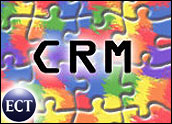
The consumer backlash against unsolicited telemarketing and e-mails coupled with ever-increasing competition for customer attention have forced companies to take a new look at their inbound call centers.
Long considered a profit drain and necessary evil, inbound call centers are now seen as a critical link between an organization and its customers. Companies that have relied strongly on a carpet-bombing approach to marketing in the past are now using their inbound call centers to better target customers at the right time with the right offers.
The call center business model has historically been based on reducing the amount of time spent on each call in order to reduce costs and personnel. The quantity and not the quality of each call was the driver. Operational efficiency, in this model, was the over-riding goal — not customer satisfaction, customer retention, cross-selling or up-selling. Rarely was a call center’s operation tied to an organization’s business goals or strategies.
Incomplete Answer
With the advent of customer relationship management (CRM) initiatives in the late 1990s, call centers took on a more strategic role. CRM systems promised to bring all the threads together. When a customer called in, an operator in a call center could quickly see the entire history of an organization’s relationship with that customer — what they’d bought, when they’d bought it, what issues had come up, and how they had been resolved. Service representatives could see what sales representatives had done and to which direct marketing campaigns a customer had responded. Everyone could see who was interacting with the customer.
Although CRM systems increased operational efficiencies, these initiatives have failed to deliver significant value to customers and, as a result, have not generated high returns. Operational CRM systems improve connections to customers, but they don’t do much to improve customer understanding, and without good customer understanding, organizations can’t be sure of the best thing to say to each customer at a given point in time.
Operational CRM systems generate huge amounts of customer data, but they have not been designed to transform that data into information that organizations can effectively act on. Raw data has no real value until it is turned into information.
Put another way, CRM systems by themselves are great at facilitating communication and at illuminating what customers have done in the past; but by themselves, they do not tell an organization what to communicate. They cannot predict what the customer phoning into your call center, at this moment, would like to do but isn’t telling you — and that is the information that every customer-facing channel, like a call center, needs in order to sell more efficiently and improve bottom line profitability.
Providing Clear Picture
What is missing from many CRM and call center operational systems is predictive analytics. Many analytical CRM products, such as online analytical processing (OLAP), provide historical analysis, summarizing what has happened in the past. In other words, historical analysis can reveal who the best customers were last month and who they are this month. This kind of traditional analysis is important, but it doesn’t anticipate what will happen in the future.
Predictive analytics are needed to provide a clear picture of what is going to happen in order to take the most effective action. The predictive analytic process discovers the meaningful patterns and relationships in data and provides decision-making information about the future. Predictive analytics applications, properly deployed and seamlessly integrated with a call center system, enable organizations to do a number of things:
- Analyze all of its customer data and identify patterns that predict customer behavior.
- Understand that certain kinds of customers behave in ways that return a higher value to the organization — and not necessarily because they have purchased the most expensive product or service (but because, for instance, they are likely to repay a loan over a longer term, or are more likely to maintain a balance due on a credit card).
- Understand which types of customers pose the greatest risk to the organization or stand to decrease their value to the organization through default, high claims or fraud.
Choosing an App
Because a solid predictive analytics application can be integrated within a CRM or call center system for real-time use of in-session data, such an application can enable call center agents to act — in real time — in ways that hold the greatest potential for increasing the value of the call center to the organization. Not only does this predictive information enable customer-facing agents to make up-sell and cross-sell offers that are likely to be accepted by the customer and that return the highest value to the organization, but it also enables them to avoid pursuing offers with customers whose behavior suggests significant risk.
Consider the case of a major financial services provider. This firm has moved from a product-focused to a customer-focused sales model and relies heavily on its knowledge of customer behavior to facilitate up-sell and cross-sell efforts.
Once they integrated a predictive analytics solution with their CRM system, they were able to mine their data, develop an understanding of different kinds of customer behaviors, and use those models in real time to present in-calling customers with highly targeted offers. As a result, the firm increased its conversion rate by 50 percent, even as it decreased its marketing costs by 40 percent.
Other companies have had similar, some even more dramatic, successes. Organizations are increasing conversion rates for direct mail, Web, direct sales, and other channels — and they are doing it by enabling their customer-facing agents to work, in real time, with customer behavioral models discovered through the integration of predictive analytics.
Viable Sales Channel
As organizations realize that their marketing strategy of casting a wide net and hoping for a decent catch are over. Marketers must now transfer their time and resources from getting the best call list to truly understanding their customers and prospects and making them the right offer.
Much of this begins at the customer’s main point of contact — the call center. Organizations are aligning call center operations with business goals and seeing call center staff as a viable sales channel. With this new respect and responsibilities, and armed with predictive analytics, call center agents will rise to the challenge of making the right offer to the right customer at the right time.
Colin Shearer is Vice President of Customer Analytics for SPSS, a leader in predictive analytics technologies.


















































